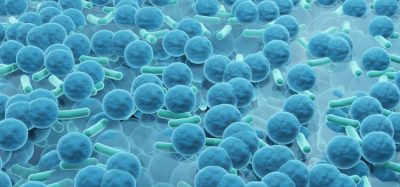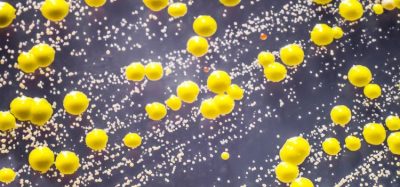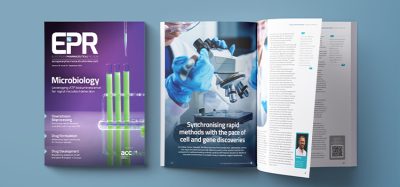Detection of microorganisms using optical spectroscopic-based rapid method technologies
Posted: 31 August 2011 |
This is the fourth in a series of articles on rapid microbiological methods that will appear in European Pharmaceutical Review during 2011. Previously, we discussed a number of cellular-component rapid microbiological methods (RMMs), such as ATP bioluminescence, fatty acid analysis, MALDI and SELDI time of flight mass spectrometry, Fourier transform-infrared (FT-IR) spectrometry and technologies that rapidly detect the presence of endotoxins. In the current article, we will review a relatively new set of rapid methods that are based on optical spectroscopy. These technologies are quite exciting, as they do not rely on microbial growth for a response and the time to result can be instantaneous.
Optical spectroscopy is an analytical tool that measures the interactions between light and the material being studied. Light scattering is a phenomenon in which the propagation of light is disturbed by its interaction with particles. There are a number of light scattering principles that may be utilised in rapid method technologies; therefore, it is appropriate to quickly review some of these principles in order to understand the scientific basis for the RMMs that will be discussed later in this article.


This is the fourth in a series of articles on rapid microbiological methods that will appear in European Pharmaceutical Review during 2011. Previously, we discussed a number of cellular-component rapid microbiological methods (RMMs), such as ATP bioluminescence, fatty acid analysis, MALDI and SELDI time of flight mass spectrometry, Fourier transform-infrared (FT-IR) spectrometry and technologies that rapidly detect the presence of endotoxins. In the current article, we will review a relatively new set of rapid methods that are based on optical spectroscopy. These technologies are quite exciting, as they do not rely on microbial growth for a response and the time to result can be instantaneous.
Optical spectroscopy is an analytical tool that measures the interactions between light and the material being studied. Light scattering is a phenomenon in which the propagation of light is disturbed by its interaction with particles. There are a number of light scattering principles that may be utilised in rapid method technologies; therefore, it is appropriate to quickly review some of these principles in order to understand the scientific basis for the RMMs that will be discussed later in this article.
Elastic scattering
Elastic scattering is one of the specific forms of light scattering. In this process, the kinetic energy of the incident particles is conserved, and only their direction of propagation is modified. One form of elastic scattering is called Rayleigh scattering. When the particle size is much smaller than the wavelength of the incident light, the scattering is preferential to the shorter wavelength component of the light. An example may be found simply by looking up in the sky. Blue skies are produced as shorter wavelengths of the incoming visible light (violet and blue) are selectively scattered by small molecules of oxygen and nitrogen.
However, when the particle size is much larger than the wavelength of the incident light, all of the visible wavelengths are scattered more or less equally. This type of scattering is known as Mie scattering. An example of this type of scattering can also be observed when looking up in the sky, but this time, focus on the clouds. Because cloud droplets are larger than the incoming visible light, almost all of the light that enters clouds will be scattered, producing a white colour. A similar effect occurs in mist or fog, when the lights from an oncoming vehicle appear like a white halo.
Whether or not these types of light scattering principles can be used in rapid methods will depend on the direction the light is scattered and the relationship between the light scattering and particle size. For example, in Rayleigh scattering, light is scattered in all directions and is not very sensitive to particle size. However, in Mie scattering, the scattered light is concentrated in a forward direction, and the scattered portion of the light is proportional to the particle size. This is why Mie scattering is used in many commercial particle detectors, and also forms the basis for using light scattering in environmental monitoring RMMs.
Instantaneous Active Air Monitoring
At least one commercially available RMM utilises Mie scattering for the real-time and continuous detection, sizing and enumeration of airborne microorganisms and total particles. When an air sample is processed through the system, one detector will size and quantify particles from 0.5 to more than 10 μm in size. At the same time, a 405 nanometre laser that intersects the particle beam will cause biological material, such as microorganisms, to auto-fluoresce, due to the presence of NADH, riboflavin or dipicolinic acid. Fluorescing particles are recorded as biologic particles, and non-fluorescing particles are recorded as inert particles. The technology is highly sensitive, does not require any reagents or consumables and provides instantaneous, simultaneous and continuous total particle and viable particle detection.
My former Eli Lilly colleagues and I have previously published papers comparing one of these RMMs with an MAS-100™ and a CLiMET CI- 450t in a cleanroom environment, and presented a case study in environmental monitoring during aseptic filling, intervention assessments and glove integrity testing in manufacturing isolators. Briefly, the data for the RMM and the CLiMET followed a similar trend of increasing counts for both the ≥ 0.5 μm and the ≥ 5.0 μm total particles when sampling progressed from the most controlled area (Grade A) to the least controlled area. Zero viable particle counts were observed for both the RMM and the MAS when sampling the Grade A location. Next, continuous monitoring of three separate isolators for more than 16 hours and representing more than 28 m3 of air per isolator (under static conditions) yielded a mean viable particle count equal to zero (0) per cubic metre. No viable particles were detected during the manual transfer of sterilised components from transfer isolators into a filling isolator, and similar results were observed during an aseptic fill, a filling needle change-out procedure, and during disassembly, movement and reassembly of a vibrating stopper bowl. During the continuous monitoring of a sample transfer port and a simulated mouse hole, no viable particles were detected; however, when the sampling probe was inserted beyond the isolator-room interface, the RMM instantaneously detected and enumerated both viable and nonviable particles originating from the surrounding room. Finally, data from glove pinhole studies showed no viable particles being observed, although significant viable particles were immediately detected when the gloves were removed and a bare hand was allowed to introduce microorganisms into the isolator. The full references for these ground-breaking studies are provided at the end of this article, and I encourage you to review these papers for a thorough understanding of the technology and its applications1,2.
Other Mie-scattering RMMs have been developed for the rapid analysis of liquid samples, where the shape, size and internal or external structures of microorganisms will provide a unique light scattering signature. One such technology features 35 individual photo detectors in five concentric arcs that surround the sample vial and collect light scattering intensities, which are generated when a cell intersects the laser beam. Incident laser light reflects off of the bacteria’s outer surface and also penetrates the body of the bacterium, where the light interacts with any structural features and eventually emerges from inside the cell. These light patterns are unique for each microbial species and thereby create a signature that is captured and compared with an internal library.
A third RMM that utilises Mie scattering was developed specifically for the continuous, real-time analysis of water systems. The RMM is directly integrated into the water supply through continuous, slip-stream flow analysis, and uses what is known as multi-angle light scattering (MALS), in which the resulting patterns are termed ‘Bio-Optical Signatures’ (BOS) and can be used for the microbial classification of water pathogens. Class and species-specific BOSs have been developed based on several thousand flow-cell cycles per species designed to capture all possible size, shape and morphology variances. The system uses various sampling channels to detect, measure, and classify biological particulates ranging from 0.4 microns to 10 microns in size. Currently, the technology is capable of detecting Cryptosporidium parvum, Giardia, E. coli, Salmonella, Shigella, Pseudomonas and Legionella. Work is currently underway to expand the technology’s capabilities to include Bacillus, algae, yeast and mould.
Inelastic scattering
Inelastic scattering is different from elastic scattering in that the kinetic energy of an incident particle is not conserved. In an inelastic scattering process, some of the energy of the incident particle is lost or gained. An example is Raman scattering, usually from a laser light in the visible, near infrared, or near ultraviolet range. When the laser interacts with a molecule, the energy of the laser photons is shifted up or down. This shift in energy provides information about the vibrations and rotations of the molecule. Because each molecule has its own unique Raman spectrum, or fingerprint, we can use Raman spectroscopic techniques to identify microorganisms.
A new RMM technology now utilises Raman spectroscopy to provide a microbial identification without the need for microbial growth. A test sample is first retained on a supported film, and the surface is examined for microscopic particulates. A spectral signature is provided for each particle, which is then statistically correlated with spectral signatures in a library composed of Raman signatures of known microorganisms. If there is a match, a microbial identification is provided. The technology is able to target a single cell for microbial identification, and, under the right conditions, enumeration, within minutes. The system’s capabilities allow for the analysis of air and liquid samples, and virtually anything that can be passed through the filtration membrane/support film.
Summary
Optical spectroscopic-based rapid micro – biological methods represent the next generation in real-time or close to real-time detection and identification opportunities for the pharmaceutical and biopharmaceutical industries. These types of technologies offer an unprecedented advantage over conventional, growth-based methods for monitoring the state of microbiological control in manufacturing environments, and represents significant progress toward the acceptance of microbiology Process Analytical Technology (PAT) solutions that may one day support the elimination of offline or laboratory-based assays, and the parametric release of aseptically-filled products. Furthermore, the strategies for the validation and implementation of these technologies are no different from other RMM systems I have discussed in my previous articles. For a more detailed review of validation and implementation strategies for these and other types of RMMs, please visit my educational website, http://rapidmicromethods.com.
Join me for the next article in this series, where we will discuss nucleic acid and gene amplification-based technologies for microbial detection, identification and strain differentiation.
References
1. Miller, M.J.; Lindsay, H.; Valverde-Ventura, R.; O’Connor, M.J. (2009) Evaluation of the BioVigilant IMD-A, a novel optical spectroscopy technology for the continuous and real-time environmental monitoring of viable and nonviable particles. Part I: Review of the technology and comparative studies with conventional methods. PDA Journal of Pharmaceutical Science and Technology 63(3): 244-257
2. Miller, M.J.; Walsh, M.R.; Shrake, J.L.; Dukes, R.E.; Hill, D.B. (2009) Evaluation of the BioVigilant IMD-A, a novel optical spectroscopy technology for the continuous and real-time environmental monitoring of viable and nonviable particles. Part II: Case studies in environmental monitoring during aseptic filling, intervention assessments and glove integrity testing in manufacturing isolators. PDA Journal of Pharmaceutical Science and Technology 63(3): 258-282
Dr. Michael J. Miller is an internationally recognised microbiologist and subject matter expert in pharmaceutical microbiology and the design, validation and implementation of rapid microbiological methods. He is currently the President of Microbiology Consultants, LLC (http://microbiologyconsultants.com). For more than 22 years, he has held numerous R&D, manufacturing, quality, and consulting and business development leadership roles at Johnson & Johnson, Eli Lilly and Company, Bausch & Lomb, and Pharmaceutical Systems, Inc. In his current role, Dr. Miller consults with multinational companies in providing technical, quality and regulatory solutions for pharmaceutical manufacturing, contamination control, QC, barrier isolator technology and microbiological PAT. He also provides comprehensive training for his clients in the areas of rapid method validation and implementation.
Dr. Miller has authored over 100 technical publications and presentations in the areas of rapid microbiological methods, PAT, ophthalmics, disinfection and sterilisation, is the editor of PDA’s Encyclopedia of Rapid Microbiological Methods, and is the owner of http://rapidmicromethods.com, a website dedicated to the advancement of rapid methods. He currently serves on a number of PDA’s program and publication committees and advisory boards, is co-chairing the revision of PDA Technical Report #33: Evaluation, Validation and Implementation of New Microbiological Testing Methods, and routinely provides RMM training programs for the industry and professional organisations worldwide.
Dr. Miller holds a Ph.D. in Microbiology and Biochemistry from Georgia State University (GSU), a B.A. in Anthropology and Sociology from Hobart College, and is currently an adjunct professor at GSU. He was appointed the John Henry Hobart Fellow in Residence for Ethics and Social Justice, awarded PDA’s Distinguished Service Award and was named Microbiologist of the Year by the Institute of Validation Technology (IVT).









